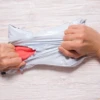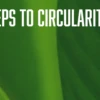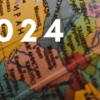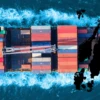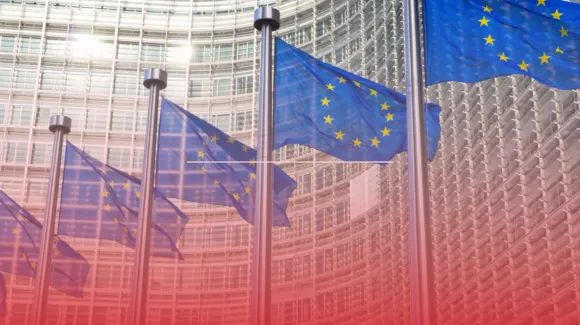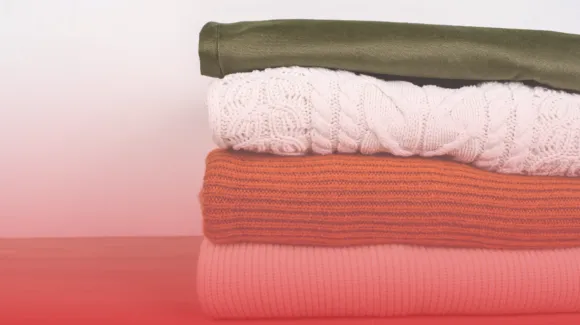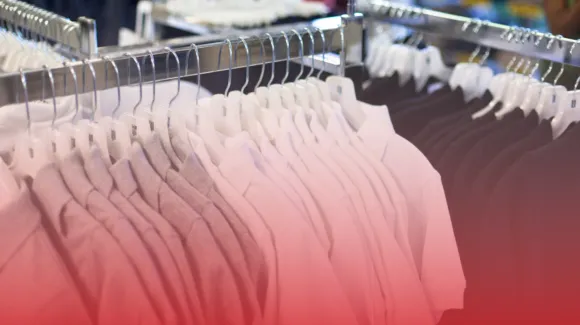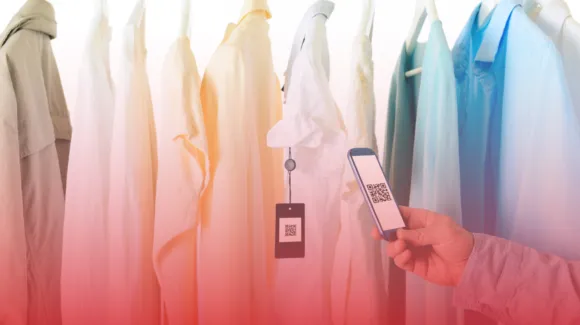How can digital IDs enable a more sustainable fashion industry?
Digital IDs provide customers with detailed information on how to care for and repair their garments, the origin of the raw materials used, the conditions under which they were produced and the authenticity of the items they have purchased. By providing greater transparency and insight into garment supply chains, digital IDs can help minimise unsustainable practices in the fashion industry and catalyse circular business models.
In the second blog in our series on digital IDs and the future of circularity in the fashion industry, we discussed how brands around the world are using digital product IDs to streamline their circularity efforts. In this blog, we explore how the widespread use of digital product IDs could potentially impact the fashion industry.
Providing radical transparency to all stakeholders in the fashion and textile value chain is expected to bring big benefits for customers, brands and circular partners. But as well as supporting traceability, reparability and recyclability, greater transparency around fashion and textile products is set to have knock-on impacts further up the value chain.
What benefits will digital IDs bring to the fashion industry?
From my side, I can see the potential for digital IDs to change behaviours at both a consumer and brand level. It’s like with energy efficiency labels on household appliances. If you see that a machine has an A+ rather than a B rating, you know that your energy costs will be lower in the long term. In the same way, digital IDs for fashion and textiles give consumers the power to make more informed choices. For instance, the EU’s current ESPR proposals indicate that future digital IDs will be required to contain a reparability index – telling consumers exactly how easy their clothes are to repair and renew. This will raise awareness of this important factor, meaning it’s much more likely to influence purchase decisions.
And that means brands will have to take notice! Digital IDs, therefore, have the power to shine a light on a whole new aspect of clothing design – and once you’ve opened that door, there’s no going back. Just as we’ve seen with the adoption of circular business models such as reselling, it doesn’t take long for previously ‘radical’ ideas to become normalised. So, we can expect brands to start creating more durable and reparable products in due course. And this positive feedback loop is key to creating a workable circular economy for textiles. Because the more repairable clothing is, the more value it retains, and the longer its usable lifetime.
Creating digital IDs is all about making environmental impacts more visible to consumers and making vital data more easily available to value chain partners. It’s a crucial step in making sure that more “nutrients” get cycled back into the circular fashion ecosystem. And it will help create more “nutrient-rich” products: lower-impact, longer-lasting goods offering enhanced renewability. This will create an environment full of opportunities for fashion and lifestyle companies that put sustainability and circularity first.
Ensuring secure digital IDs for a circular fashion and textiles industry
But with all the benefits that these digital IDs may bring, the question of data security remains vital. Because fundamentally, building a circular economy for fashion requires trust on all sides. This is a key part of the EU’s ESPR legislation. It addresses how to balance the correct level of data granularity with the privacy rights of the individual.
This will involve several safeguarding measures including the following: only collecting data that is strictly relevant to enabling a circular economy for fashion and textiles; ensuring that only the necessary stakeholders have access to the information they need to carry out their role in the value chain; and guaranteeing the security and reliability of data storage facilities.
Ready to build a data-enabled circular economy with digital IDs?
Building integrated, shareable and interoperable digital IDs for fashion and lifestyle products will be fundamental to creating a circular value chain for our industry. And with the wealth of private and public bodies making moves in this area, there’s never been a better time to investigate the possibilities.
To return to our rainforest metaphor, data is like the microbes that decompose the dead vegetation on the forest floor, releasing the nutrients to be used again by new plants. It’s a connecting force that keeps the life cycle in motion. And if we want to preserve our planet for future generations, we need to embrace it. Quite simply, if we’re serious about circular, we need to get serious about data.
Together with value chain partners, we can connect the entire product lifestyle, helping producers, brands and consumers to get on the same page about circularity and sustainability. We’re on the verge of creating an industry-wide shift: from disconnected, siloed operations to an integrated and self-sustaining value chain.
It’s a virtuous cycle: the more data that’s available, the more transparent we can be on sustainability issues. And the more transparent we can be, the bigger the role these issues will play in purchase decisions. And the more brands will be forced to sit up and take notice. To help our clients stay ahead of the game on this vital issue, Bleckmann is investing in digital ID technology. Check back soon to find out more in the final blog of this series!
Want to find out more about our circular fashion solutions?
Why not talk to one of Bleckmann’s circular fashion experts today? We’d be happy to discuss how your brand can make the most of circular business models.
Check back soon for part four, were we’ll be discussing practical solutions for creating a robust data-sharing ecosystem for circular fashion.
You can also find out more about Bleckmann’s circular solutions here.

